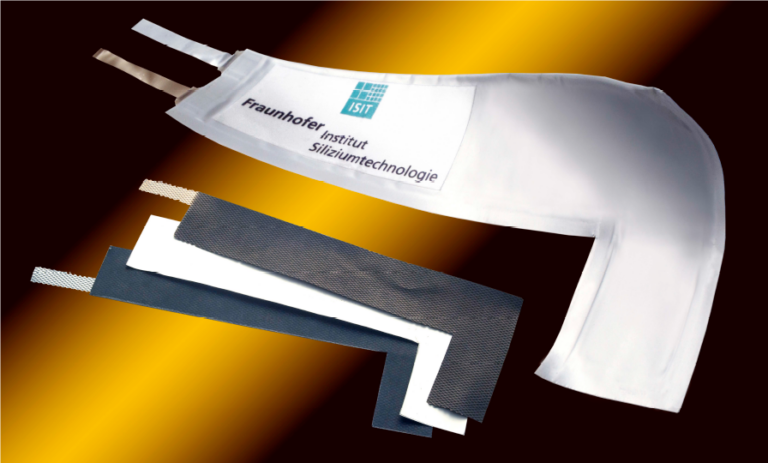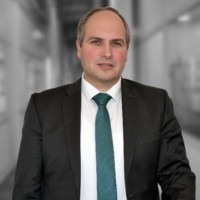
At MEDICA 2022, NewsMedical spoke with Andreas Wuersig from Fraunhofer ISIT about the current and potential applications of their battery research and technology in the medical sector.
Please could you introduce yourself and your role at Fraunhofer?
My name is Andres Wuersig. I’m head of the business field “Battery Systems FAB-SH” at the Fraunhofer Institute for Silicon Technology in Itzehoe, Germany. One of the core topics of our institute is research and development on new battery technologies, including batteries for medical applications.
What is Fraunhofer’s main commercial focus in the medical sector?
Fraunhofer is one of the largest organizations for applied research in Europe and has 76 institutes in Germany alone, as well as several international research centers. At our institutes, we are active in very many different technology areas. At Fraunhofer ISIT, one of these 76 institutes, our focus is on microtechnology, power electronics, and battery technology. In the business field of battery technology, we work on customized energy storage solutions, especially lithium batteries, for many different applications. This can be electromobility, but also stationary storage of renewable energies, logistics, shipping, avionics, etc., but we have also been working on battery solutions for medical applications for a long time.
Fraunhofer excels in applied research – could you tell us more about the research the company supports?
Fraunhofer is a non-governmental non-profit organization with the ability to close the gap between basic research, such as results coming from universities, and industrial applications. Usually, you have a lot of basic research results which are quite impressive, but to get this over to the application to really be on the market it takes some time, and many of the developments are dying in between. Fraunhofer is trying to solve this issue and really bring research one step closer toward application.
You exhibited at MEDICA 2022 to present Fraunhofer’s battery innovations that are being implemented in the medical field. What are some of the specific applications of these batteries?
We are working on different battery solutions in the medical field. One example is rechargeable hearing aid batteries with higher energy densities that are safer and more easily produced.
Image Credit: Fraunhofer ISIT
We are also working on flexible batteries that are bendable and can be moved in different directions, which can be used in wearable devices like EEG measurements. We know that in sleeping laboratories patients usually don’t sleep well, so it would be better if they can sleep at home and you can collect all the data with flexible and portable technology. Together with partners, we have developed such EEGs, where our focus was to have a flexible battery that can be placed on the forehead that is also safe under high power conditions.
We have also worked on flexible batteries you can put in a shoe. Here, we have developed a project together with our partners to analyze the walking pattern of a patient so you can diagnose them from their gait. For this, we had to develop a battery that was flat and that can be integrated into a shoe safely.

Image Credit: Fraunhofer ISIT
What sets your batteries apart from others used in the medical field?
One big topic that is coming up more and more is that you have far more cableless devices in an operation environment, and for these, you need an energy source – a battery.
However, the issue is that in many cases you need to sterilize these devices, and at the temperatures that are used for this sterilization process, a standard battery would not survive or would have significant safety issues. We have developed a battery that is able to withstand these high temperatures, up to 150 degrees, and it can even work under these conditions.
On the other side, what also sets us apart is high mechanical flexibility in terms of geometry as well as the chemistries we use in our cells.
The medical sector has advanced significantly over recent years with increasing technological innovation. How do you imagine it will change further over the next decade, thanks in part to technology such as your own?
I think we are already seeing that more and more handheld cableless devices are used, and we will see this more and more in surgical environments.
However, we will also see more robotic systems come into use, so we are also talking with several companies in that field. This industry is also looking for cableless devices, and this could be quite interesting for us in the future.
There are also a lot of new sensors that are integrated into clothing, and you need flexible batteries for this, so that is also an interesting potential application for us.
How important are in-person trade shows like MEDICA for knowledge sharing across the industry?
It’s important to show what you have developed, see what the current direction of companies is, and also to make contacts and find partners, because in the end, what we want to do is to bring our development to an industrial customer that can use our product.
What is next for Fraunhofer in regard to its battery technology?
We are also developing other types of technologies in this environment. One of the things we are currently working on is developing a kind of smart cell. It will have some sensors integrated in order to improve the safety of cells over a longer period of time, which of course is especially important for medical applications.
In the past, we also developed some implantable batteries, but in order to make this into a really big product you need a better understanding of the behavior of the battery. You need safer batteries, and therefore we are developing some sensors that can be integrated into them to give you a signal in advance if something is really not working properly.
About Andreas Wuersig
 Dr. Andreas Wuersig is currently head of the “Research Center for Applied Battery Technology” at the Fraunhofer Institute for Silicon Technology (ISIT). For more than 20 years he has been working on the development of advanced battery technologies, especially in the areas of cell manufacturing, system integration, and characterization. After completing his chemistry studies, Dr. Wuersig received his Ph.D. in 2005 from the PSI of ETH Zurich with a thesis on the characterization of electrodes for lithium-ion batteries. Since 2006, he has been working at the Fraunhofer Institute ISIT on the development of custom lithium battery cells and their adaptation to a wide range of applications. His current research focuses on new high-power batteries, solvent-free manufacturing processes, new separator concepts, and new cell monitoring technologies.
Dr. Andreas Wuersig is currently head of the “Research Center for Applied Battery Technology” at the Fraunhofer Institute for Silicon Technology (ISIT). For more than 20 years he has been working on the development of advanced battery technologies, especially in the areas of cell manufacturing, system integration, and characterization. After completing his chemistry studies, Dr. Wuersig received his Ph.D. in 2005 from the PSI of ETH Zurich with a thesis on the characterization of electrodes for lithium-ion batteries. Since 2006, he has been working at the Fraunhofer Institute ISIT on the development of custom lithium battery cells and their adaptation to a wide range of applications. His current research focuses on new high-power batteries, solvent-free manufacturing processes, new separator concepts, and new cell monitoring technologies.
